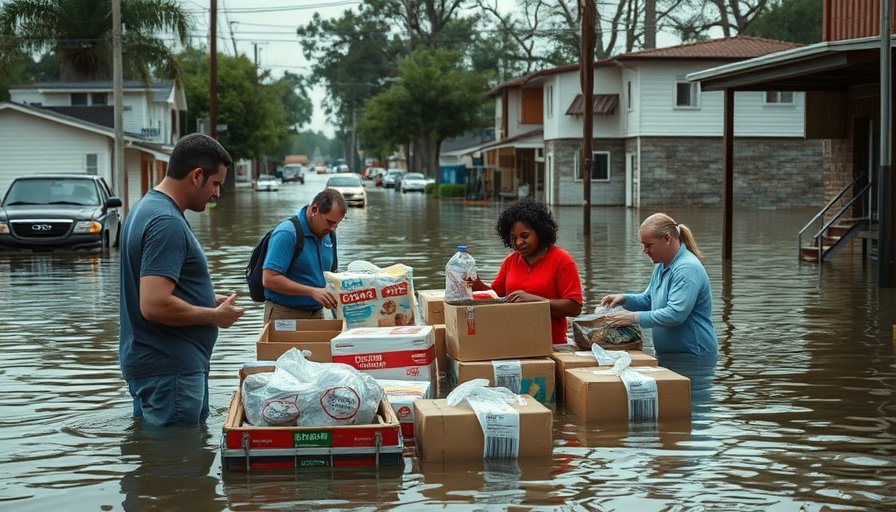
Resilience in the Face of Nature's Fury
In a gripping tale of survival, a Texas mother of five recently returned to what remains of her beloved cabin, now reduced to ruins by devastating floods. The torrential rains that swept through the region not only destroyed homes but also tested the resilience of countless families. For many, her story is a powerful reminder of how nature can quickly alter life's course, leaving behind questions of safety, recovery, and the future.
Understanding the Impact of Climate Change
The flooding in Texas is not an isolated incident; it highlights a growing trend linked to climate change, resulting in more extreme weather patterns. As this mother navigates her loss, the larger context reveals concerns about increasing flood risks in numerous parts of the country. Communities are challenged to prepare for these eventualities as scientists warn that climate-related disasters may become more frequent. Where does this leave American families striving to maintain their livelihoods amidst such uncertainty?
Community Response and Recovery Efforts
In the aftermath of this flooding, support from neighbors, volunteers, and community organizations has poured in, offering hope to those affected. People are banding together, showcasing the strength of local ties and the spirit of cooperation that often shines brightest in tough times. Local government initiatives to expedite recovery, including assistance programs and rebuilding efforts funded by federal aid, are crucial in helping families like hers rebuild their lives.
Practical Steps Toward Resilience and Recovery
As communities begin to recover from such disasters, it’s important to implement practical steps for resilience. This might involve better urban planning, improved infrastructure, and a commitment to sustainable practices. Families are reminded to consider flood preparedness through emergency kits, updated insurance policies, and community resources that can help mitigate future risks. Here are a few actionable suggestions for anyone living in flood-prone areas:
- Stay informed about local weather conditions and flood risks.
- Create and maintain an emergency preparedness plan for your family.
- Evaluate your insurance coverage for adequate flood protection.
- Participate in community discussions regarding infrastructure and safety improvements.
Legislating for Future Safety
As flood recovery efforts unfold, the need for greater investment in climate resilience measures comes to light. Engaging with policymakers to support initiatives aimed at environmental sustainability and infrastructure improvements can help avert crises in the future. How can individuals contribute to the discussion around climate policies, ensuring that communities receive the support they need to withstand natural disasters? It's imperative to make voices heard when it comes to protecting families and homes.
Conclusion: A Call to Action
The story of this Texas mother serves as a poignant reminder of the unpredictability of nature and the strength found within communities during tough times. It urges us to reflect on how personal resilience can be bolstered by community support and robust policies. As we navigate changes in our environment and face new challenges, let’s stay engaged with our communities and demand policies that prioritize our safety and well-being.
Being part of the discussion is essential. Join local forums, engage with community leaders, and support climate resilience initiatives. Keep informed about our national news headlines to understand the evolving landscape of recovery and prepare for future challenges.
 Add Element
Add Element  Add Row
Add Row 



 Add Row
Add Row  Add
Add 


Write A Comment